Rab Aeon 20L

The Aeon 20 is a day pack that is loaded with features that take time to digest but make hiking with it a comfortable experience. I like the way it carries, the various storage options, and its ability to sport a decent amount of weight if needed. It’s sold in a wide range of sizes (12-35L) with some lightweight and ultralight lines. It would benefit from larger hip belt pockets and slightly outweighs some competitors.
Pros
- Comfort
- Features
- Ventilation
- Included raincover
Cons
- Small hip belt pockets
- Hydration sleeve is a tight squeeze
BASIC INFORMATION
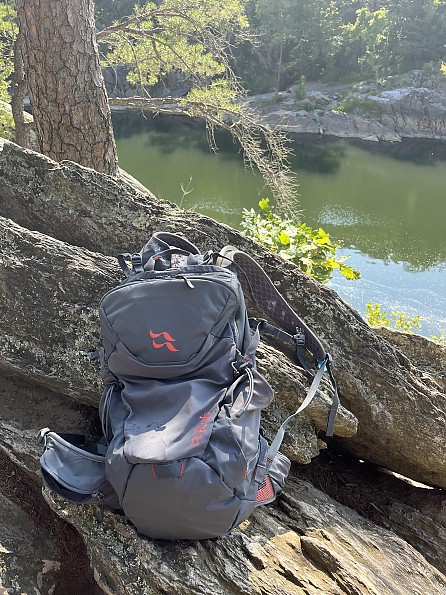
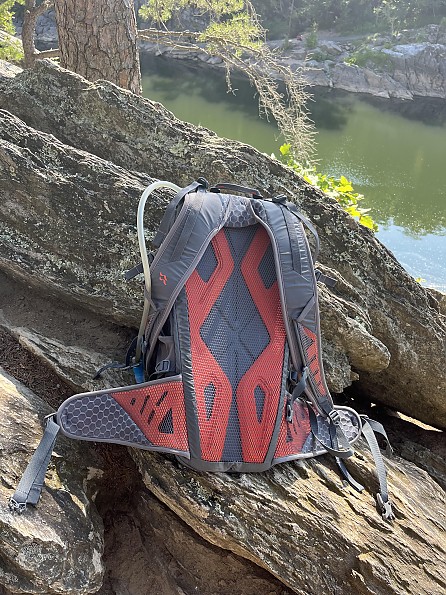
The RAB Aeon 20 is a day pack that falls in the middle of the range of what RAB offers under the Aeon badge—you can buy a 12L Aeon if you don’t need much space, a 22, 27, or 35L version if you need more space (it’s a different design, different top anyway), and RAB sells both "lightweight" and "ultra" versions too, as well as women’s-specific Aeon packs.
The Aeon 20 is sold in one size that claims it works for a 19-21 inch torso length; larger models offer a bit more size flexibility. The pack weighs 33 ounces, a slice over two pounds; for the sake of comparison, the Aeon Ultra 20 cuts the weight to 22 ounces, and another popular option in this size range, Osprey’s Talon 22 (which doesn’t have a frame/suspension to speak of) weighs about 15 ounces.
So, what distinguishes the Aeon 20 from the many other day pack options? First, that extra weight gets you pretty good capacity to haul weight beyond what you would normally stuff into a pack this size. The "Air Contour X" suspension consists of a comfortable hip belt with straps that pull toward the center, a medium-flexible hard plastic frame sheet with channels and some foam inserts (the red parts) that can carry a decent load, and lightweight shoulder straps.
So, unlike a frameless 20-22 liter pack, you could carry 25-30 pounds in the Aeon 20 in a pinch; keep the weight closer to 20-25 pounds max, because the hip and shoulder straps tend to struggle at that point; it’s kind of hard to put that much in a pack this size anyway.

FEATURES
This is a full-featured day pack. Starting at the top, there is a sturdy haul loop, a zippered opening to the main pack, a smaller zippered pocket for wallets, phones etc. with a key clip, a very small/low profile interior zippered pocket, and a sleeve to swallow a hydration reservoir that’s between the frame sheet and the main storage. Note—you really have to loosen the load lifter straps at the top of the shoulder straps to get the reservoir into the sleeve, and it takes some waggling—it’s a tight squeeze. It’s well-designed for hydration, with a polyester/hook & loop tab that nicely grabs the a plastic clip at the top of my three-liter Hydropak and an elastic on each shoulder strap to snag the hydration hose.
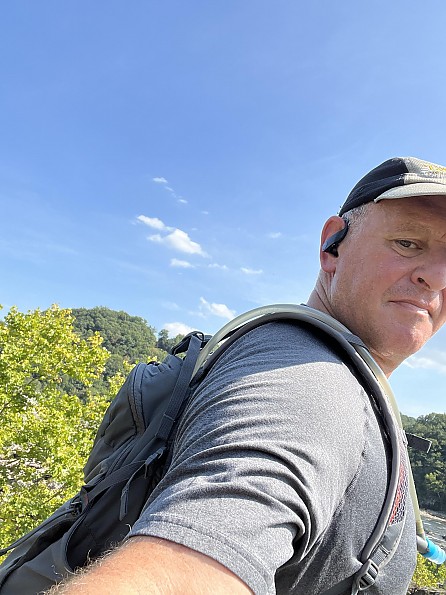


The pack has two compression straps on each side. I generally didn’t pull them tight—the lower straps constrict the stretch mesh bottle pockets on each size otherwise. Though I don’t usually carry bottles these days and use those stretchy pockets for gloves, phone, or snacks, they swallow a liter-sized Nalgene.
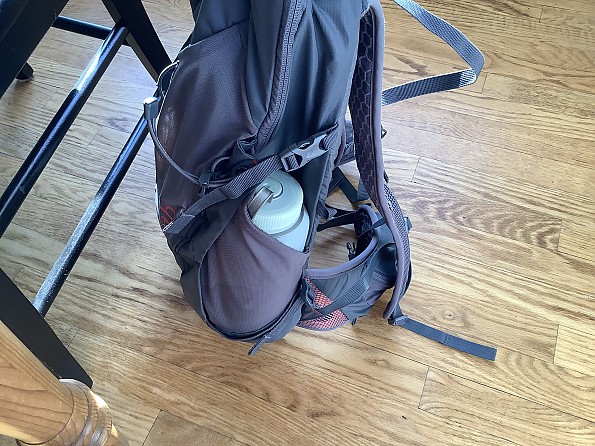
Moving to the back of the pack, there is a large stretchy outside pocket, ideal for stowing a wet rain shell, and dual elastics that combine with a clever, hidden lower clip to hold a pair of trekking poles; one size also has an ice axe loop.
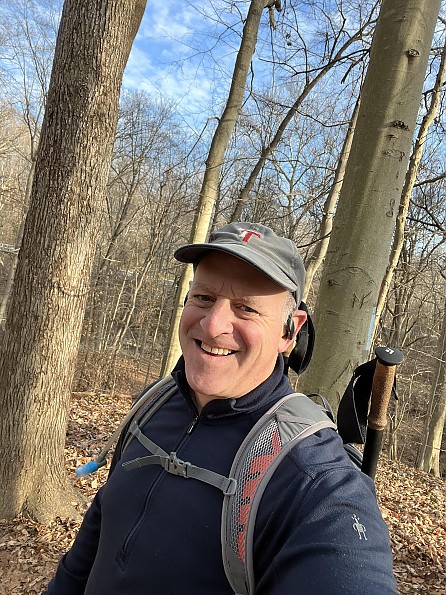
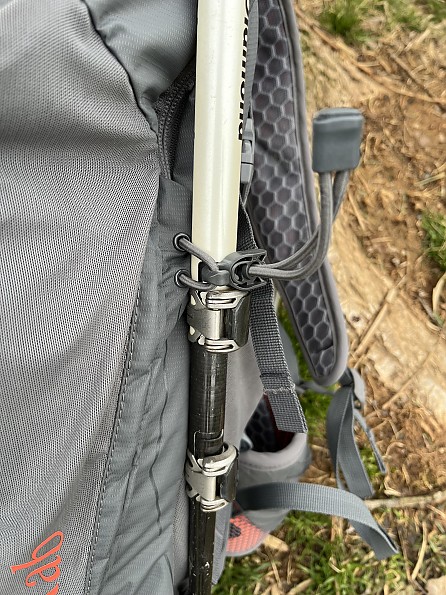
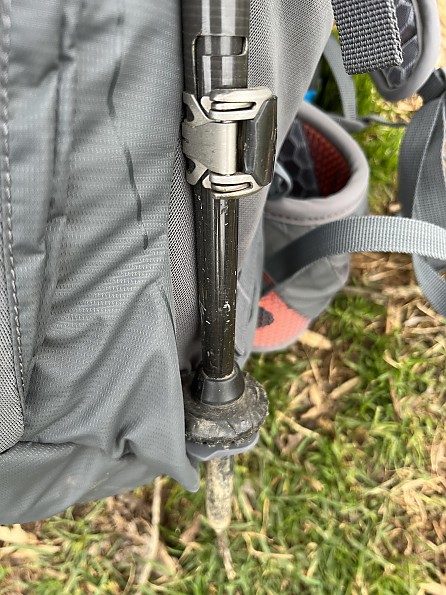
Semi-hard plastic piece is hidden when not in use, but insert the trekking pole tip, and your poles are secure.
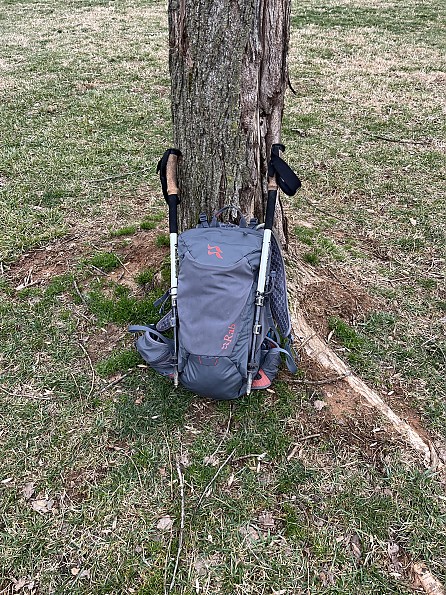
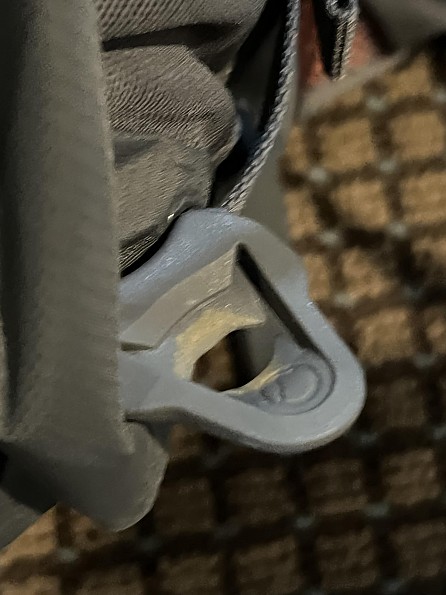
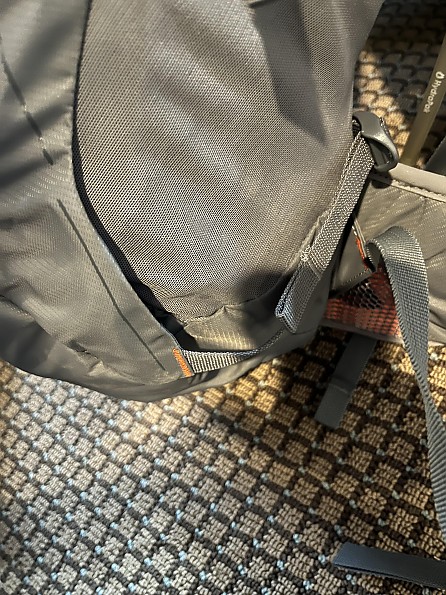
Finally, at the bottom, each hip belt "wing" has a small stretch zippered pocket, and there is an integrated rain cover with its own exterior zippered pocket at the bottom. The hip belt pockets are really small—I wouldn’t put a phone in there. Small snacks is about all that fits; I would have preferred slightly larger pockets there, but because I don’t use bottles most of the time, the bottle pockets provided ample storage for things I wanted while hiking. The rain cover has both an elastic shock cord around the edge and a pair of toggles that secure the cover to the sides of the pack.
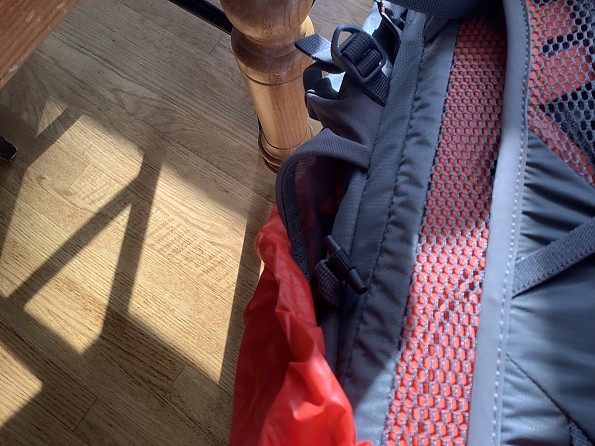
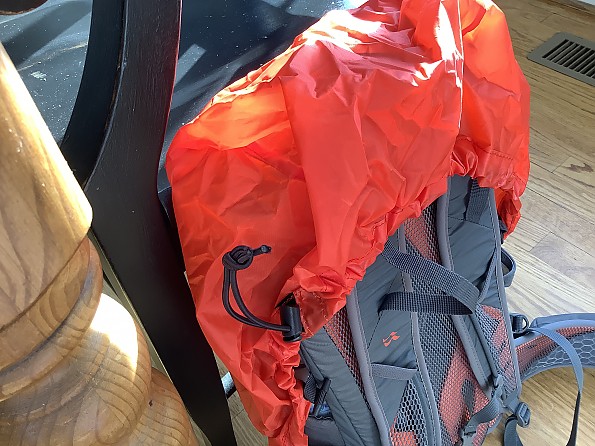
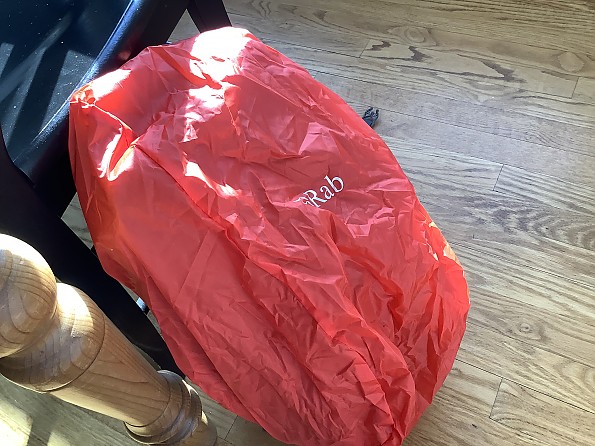
If you want to save a little weight, leave the cover home.
HOW I USED/TESTED THIS DAY PACK
I used the Aeon 20 as my primary day-hiking pack from its arrival in August through the present, so I have been using it for about four months. Most of the time, I carried relatively minor stuff—a warm layer, a rain shell, some food, gloves, hat etc. I always hiked with a three-liter reservoir. On a few hikes, I wrapped a fleece mid-layer around a 15-pound weight to see how the pack would carry pushed to what I think it the usable limit. Weather varied a lot, but I hiked in quite a bit of very steamy weather.
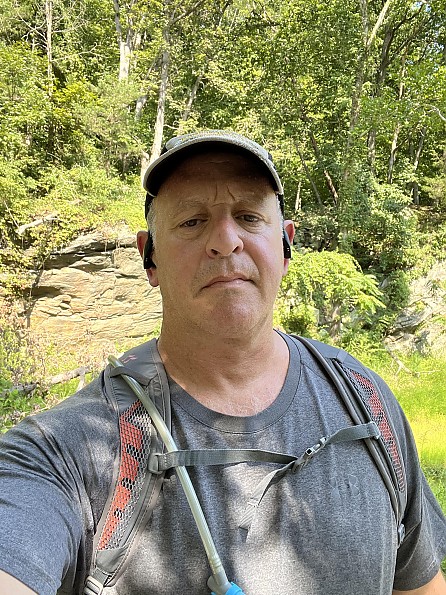

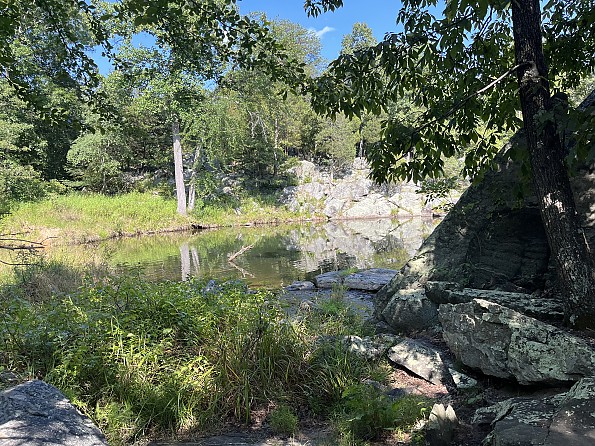
Observations: First, it’s comfortable to carry. I like how the frame sheet hugs my lower back, and the shoulder straps, hip belt, and sternum strap are easy to adjust for a good fit. Great hip belt really wraps nicely for such a small/thinly padded belt. The straps do a nice job with moisture on a hot day; with a plastic frame sheet, even with some mesh and contouring, means your back may get a bit sweaty, thought this setup does a decent job. It’s a low profile pack in the sense that it’s narrow side to side, so it won’t impede your arm range of motion when scrambling.
Second, it can tote a fair bit more weight than a frameless pack of a similar size. It’s a good option if you need to haul extra water or gear, though I would opt for the 27 or 35 liter sizes if you’re thinking about clothing or other stuff with more bulk.
Third, the features are intelligently designed and work well. It’s straightforward to get the shoulder straps and hip belt to fit, the bottle pockets are easy to reach without great contortions, and the pole carry system is very secure. The hydration system is great—the tube emerges from an open sleeve and doesn’t wave around (I loop the valve under the sternum strap), and the sleeve doesn’t sag when it starts to empty out.
TAKEAWAYS
But for a few minor design things with which I might quibble, this is a great day pack that I highly recommend. I suspect the larger size, like the 35 liter, would address the few issues I had with this. With any backpack that has this much lightweight fabric and stretch mesh, I’ll be interested to see how it wears over the long run; so far, everything is intact, and it’s clearly well-made.
Background
Four months of day-hiking with the Aeon 20; over 40 years of hiking with packs of pretty much all shapes and sizes, and I ‘ve tested a number of day packs for Trailspace over the years.
Source: received for testing via the Trailspace Review Corps
(Sample for testing and review provided by Rab)
Your Review
Where to Buy
You May Like
Specs
| Price |
MSRP: $160.00 Current Retail: $129.95 Historic Range: $69.89-$170.00 |
| Weight |
0.93kg / 2lb 1oz |
| Volume |
20lt / 1220 cu in |
| Dimensions |
51 x 26 x 17 cm |
| Back system |
Air Contour X |
| Back length |
19-21 in / 48-53 cm |

